Written by: Umbrella
Recently, two traders in the Korean crypto market have become the focus of discussion in the crypto circle due to their remarkable performance.
A trader with the nickname Namseokhee placed high-leverage long bets on altcoins on Binance, increasing the number of long positions from 75 to 105 in two weeks, with returns skyrocketing from 134 times to 1400 times, with an initial margin of less than $3,000.
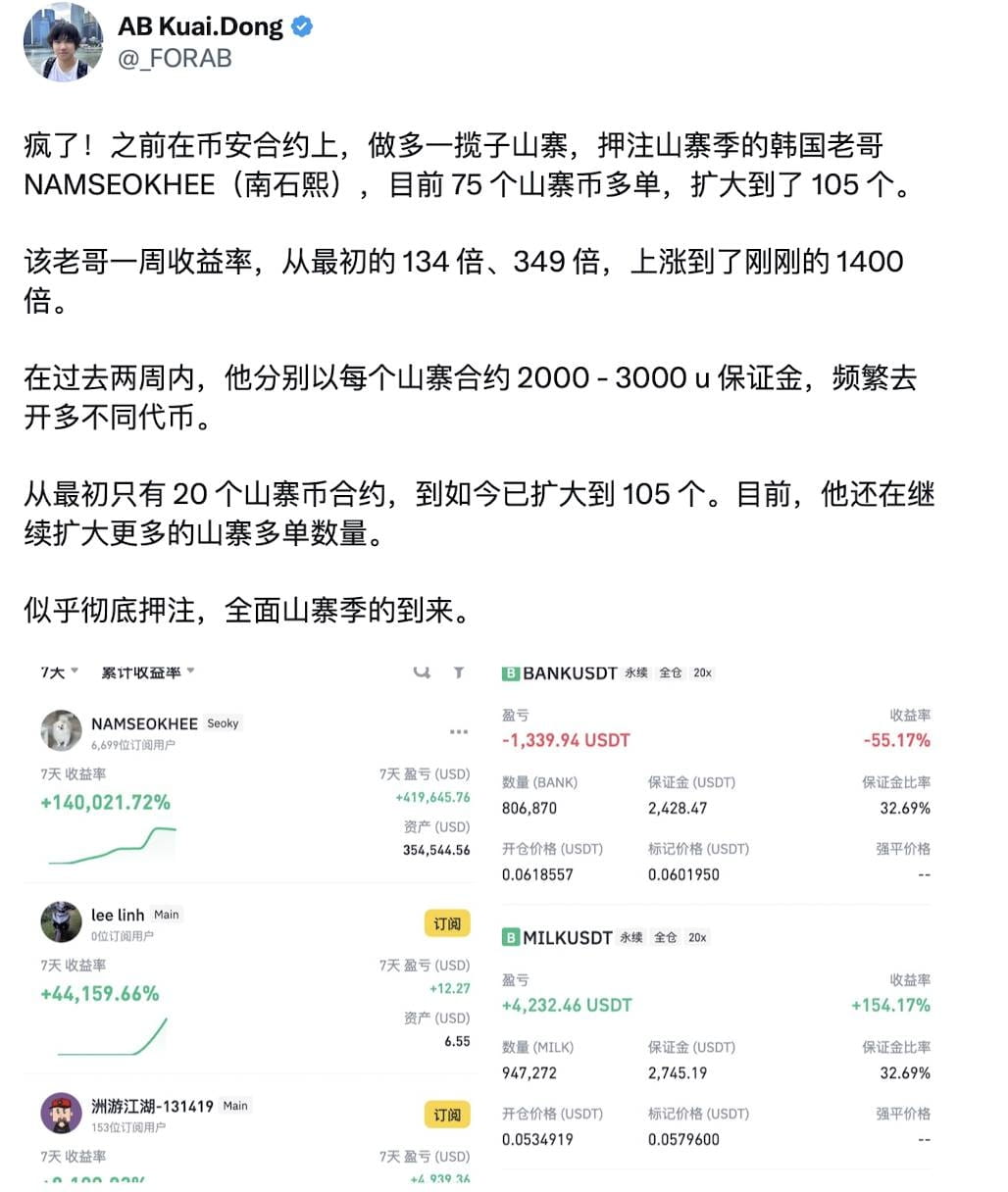
Image source: @_FORAB
Another trader, Ohtanishohei, is a firm ETH bull, continuously increasing his long positions in ETH contracts over the past two weeks, with profits rising from $1.57 million to a maximum of $3.37 million.
Their dazzling performance not only ignites the enthusiasm of Korean investors but also draws the attention of the entire world to this vibrant market in Korea.
In the past six months, the Korean market has been mentioned more and more in the crypto field, and its rise is no coincidence. In 2024, the asset management scale of Korea's five major cryptocurrency exchanges exceeded $74.8 billion, with the five exchanges managing assets reaching $73 billion and a daily trading volume surpassing Korea's two major stock exchanges.
As Korea's largest cryptocurrency exchange, Upbit's daily trading volume once exceeded $10.2 billion, a year-on-year increase of 94.5%. What is even more noteworthy is that the KRW accounts for as high as 37% of global fiat currency to crypto trading, second only to the US dollar.
These numbers indicate that Korea is not only a hub for crypto trading in Asia but is also occupying an increasingly significant market position in the global market.
Betting on altcoins, everyone is trading coins.
When mentioning Korea, many crypto investors may have a poor first impression. The Terra project, founded by Korean trader Do Kwon in 2022, once reached a market value of $40 billion but instantly went to zero due to the collapse of the algorithmic stablecoin, resulting in over $6 billion in losses for Korean investors. BTC was affected, dropping from $40,000 at the beginning of May to $17,000 within two months.
This event led to a 30% drop in trading volume for Korea's two major cryptocurrency exchanges, Upbit and Bithumb, with the KRW's share in global crypto trading falling from 40% to 25%. Along with this, Korea's position in the crypto market diminished.
By the second half of 2024, several altcoins have skyrocketed in price after landing on Korean exchanges, a phenomenon that continues to this day. Recently, CYBER was listed on the Korean exchange Upbit, and its price surged over 130% in a single day, with trading volume increasing by 500%, and its market cap briefly exceeding $170 million.
This data reflects that the enthusiasm of Korean crypto investors may far exceed our imagination, a point that can also be verified by the data composition of Korean crypto investors.
According to the latest report from the Hana Financial Research Institute (Investment Trends of Virtual Assets for Ages 20-50), among 1,000 financial investors aged 20-50, 27% hold cryptocurrencies, accounting for 14% of their total financial assets, with as many as 70% of respondents indicating their willingness to invest in cryptocurrencies in the future.
The craziness of Koreans towards cryptocurrency goes far beyond this. According to data from the Bank of Korea in 2024, by November 2024, 30% of Korean residents had opened accounts with cryptocurrency exchanges, and two out of ten government officials hold cryptocurrencies.
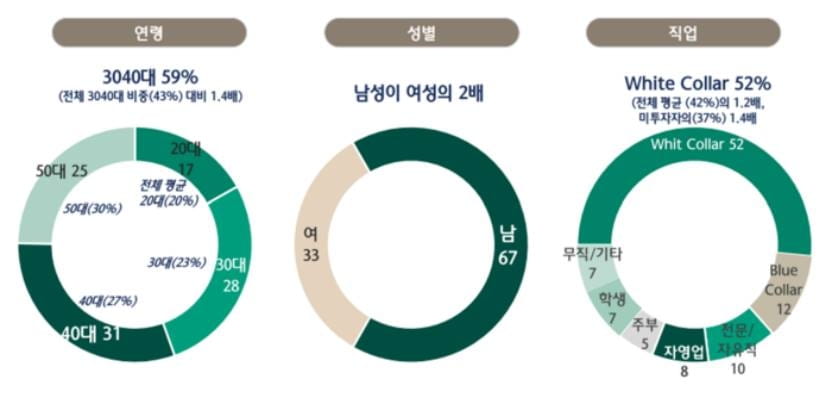
Behind the phenomenon of 'everyone trading coins' in Korea is the current social background and the government's change in attitude towards crypto.
Currently, young people in Korea are facing unprecedented social pressure.
According to data released by the Korean Statistical Office, the youth unemployment rate in Korea reached 5.5% in July 2025. Korean youth generally view the economic trajectory pessimistically, and with the upward mobility channels nearly completely locked, countless young Koreans see cryptocurrencies as the only opportunity for class transition.
This also explains why the trading strategies of Korean crypto traders generally lean towards high-leverage trading. Certain classic lines in popular Korean media works are also a reflection of this social phenomenon.

Image source: Popular Korean TV series (Squid Game 2)
Regarding the Korean government's attitude towards the crypto market, the biggest positive news for Korean traders recently has been the rise of Lee Jae-myung as President of South Korea.
Lee Jae-myung is not only a winner in the political arena but also one of the staunchest advocates of Korea's crypto policies. In his commitment to the 'Korean crypto industry', he pointed out that he will promote the legalization of virtual asset spot ETFs and guide large-scale Korean national pension funds to allocate crypto assets and build a KRW stablecoin.
The attitudes behind these messages all point to a common outcome: Korea is 'making a comeback' in the crypto market, and this storm could be more intense than ever before.
Tom Lee, the new Do Kwon of Korea?
Korea's crypto market 'comeback' is not just reflected in policy statements but also in the actual actions of Korean forces buying in. The 'watchlist' of Korean investors often includes the following targets:
ETH
In the Korean crypto market, the crypto gold is not BTC but ETH.
According to data from Korea's two major cryptocurrency exchanges, Upbit and Bithumb, in the past 24 hours, the ETH/KRW trading pair accounted for 18.06% and 12.1% of the trading volume respectively, with a total trading volume exceeding $1.26 billion. Moreover, in July alone, Upbit's ETH trading volume reached an astonishing $111.1 billion.
This is inseparable from Tom Lee, the chairman of the board of BitMine, who holds the most ETH and is also a Korean-American, continuously boosting confidence among Korean crypto traders.
Combined with national sentiment, media promotion, and the crypto currency label, Tom Lee is currently regarded by Korean crypto traders as a figure comparable to the Luna founder Do Kwon back in the day. Even legendary trader Eugene mentioned Tom Lee in the community.
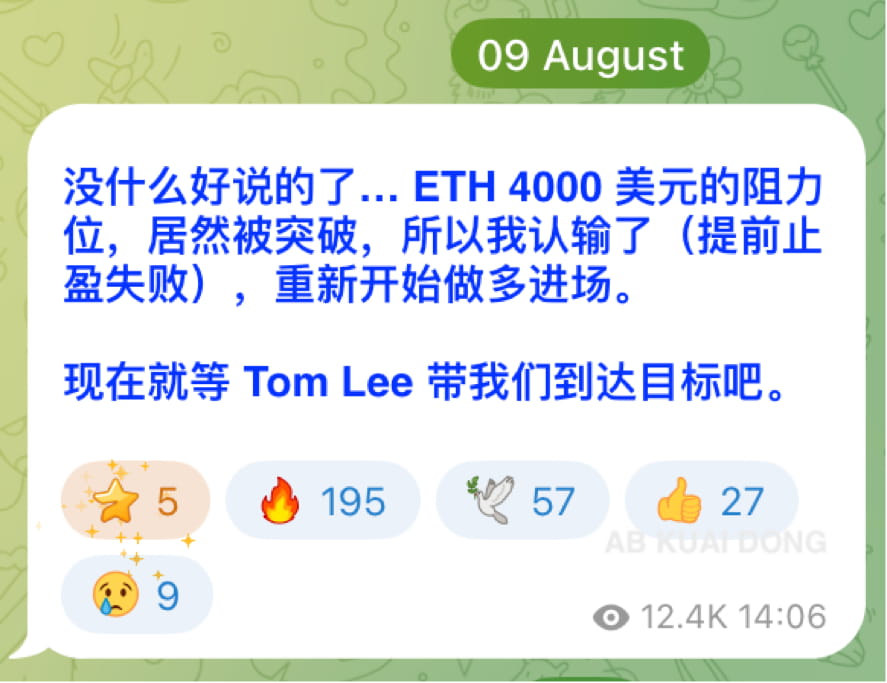
Image source: @_FORAB
BMNR
In addition to ETH, the importance of Tom Lee in the hearts of Korean traders is also reflected in the stock of BitMine, a microstrategy company.
As of August 15, BitMine holds more than 1.2 million ETH, valued at $5.3 billion, more than double the amount held by the second-place SharpLink. According to data from the Korea Securities Depository, since July, Korean retail investors have cumulatively net bought over $259 million of BMNR, making it the most popular foreign security during the same period.
In the eyes of countless Korean traders, BitMine has become the operator controlling the rise of ETH, while the US stock target BMNR has become the leveraged ETH. Compared to ETH, BMNR's increase of up to 66% since July 1 also aligns better with the high-risk preference of Korean crypto traders.
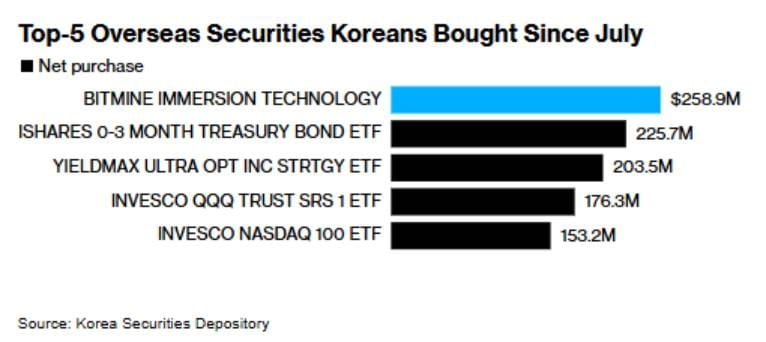
XRP
In addition to ETH, XRP is also a major investment target for Korean crypto investors. In the past 24 hours, the total trading volume of XRP on Upbit and Bithumb reached $1.13 billion, just $100 million shy of ETH.
On May 26, the XRP/KRW trading pair surpassed BTC and ETH to top the KRW market. Even more crazily, at that time, the price of XRP on Upbit surged to $265 million, exceeding the international market price by 3%.
On the other hand, Korea's largest cryptocurrency exchange, Upbit, holds more than 5.9 billion XRP, nearly double that of Binance. Behind this crazy phenomenon, the SEC's withdrawal of the XRP securitization accusations and the potential for cross-border payments are attracting Korean investors, while the KRW stablecoin policy further boosts its demand, with retail investors generally optimistic about XRP's future potential.
Returning to the crypto stage.
Driven by popular targets like ETH, BMNR, and XRP, the Korean crypto market is returning to the crypto stage at an astonishing speed. From retail investors to institutions, from policies to culture, Koreans seem to have regarded cryptocurrencies as a new engine for national development. However, this 'everyone is trading coins' phenomenon and high-leverage trading strategies are not without concerns.
Just yesterday, on August 14, after the US announced PPI data, the crypto market plummeted. Namseokhee, who had heavily bet on the previous one-sided upward trend, saw his position turn from profit to loss, even experiencing the largest loss in history. Although such extreme trading strategies are not worthy of endorsement, the enthusiasm of Korean crypto traders cannot be ignored.
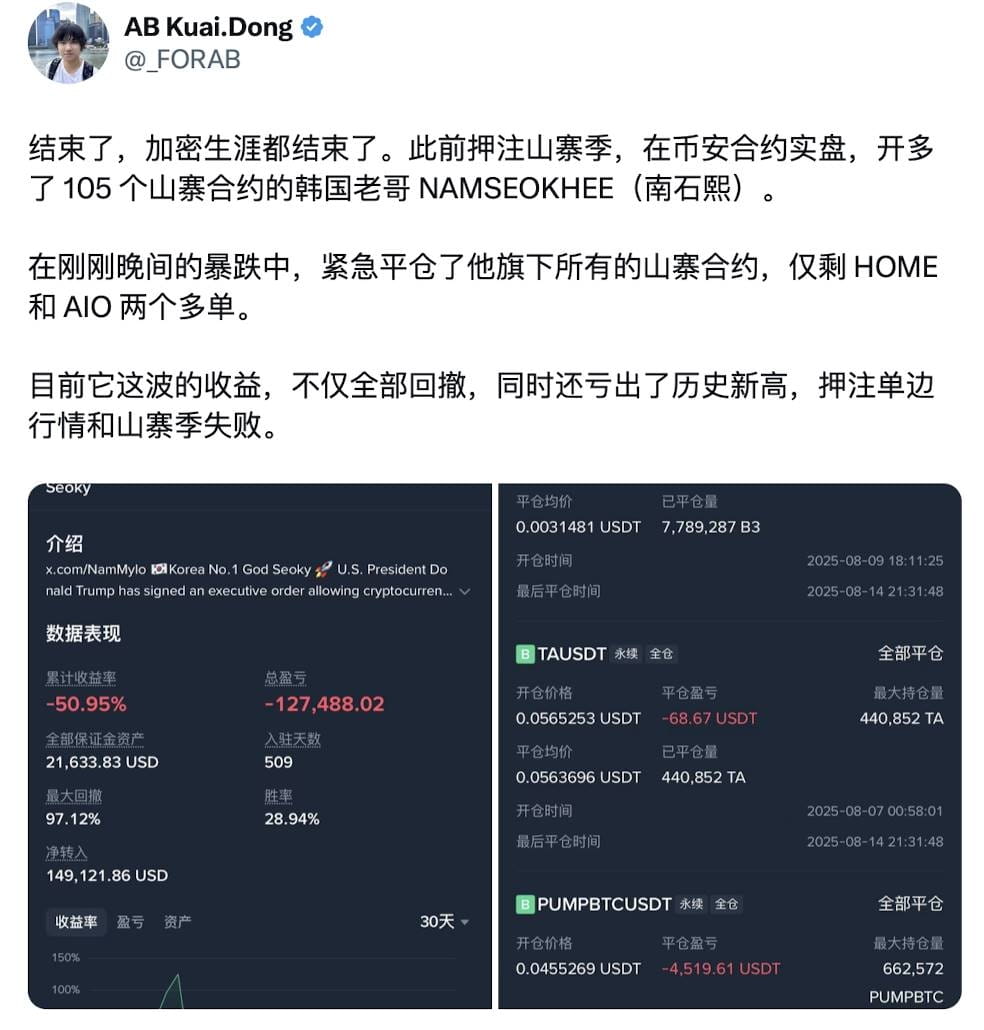
Image source: @_FORAB
In summary, the Korean crypto market is making a strong comeback from the 'Terra shadow', becoming a force that global investors cannot ignore. In the near future, with the popularization of KRW stablecoins and further implementation of pro-crypto policies, we are likely to see Korea rise to the status of the 'crypto capital of Asia.'



